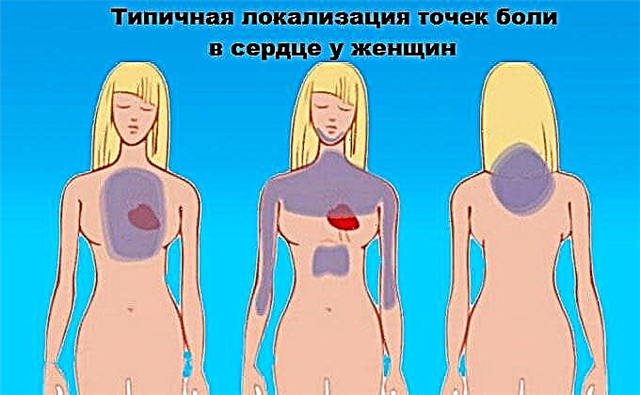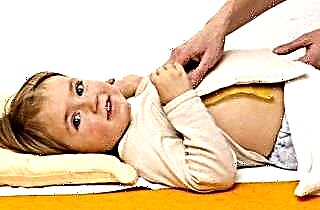Synechiae of the nose is diagnosed in children and adults, this is a problem that can appear during intrauterine development or due to various pathologies. In some cases, neoplasms do not bring any discomfort, but sometimes they make it difficult for oxygen to enter the body and cause severe complications. Adhesions in the nose can only be treated surgically, they do not dissolve on their own. In order to choose the right method of performing the operation, the doctor must assess the clinical picture and all the features of the disease.
Why do spikes appear
 Synechiae in most cases appear in the nose from injury or severe infectious diseases. There are also cases of abnormal intrauterine development of the fetus. Syphilis infection or the presence of a specific gene can lead to this disorder. If a person acquired the disease already in adulthood, and scarring of tissues became a provoking factor, there are such reasons for this:
Synechiae in most cases appear in the nose from injury or severe infectious diseases. There are also cases of abnormal intrauterine development of the fetus. Syphilis infection or the presence of a specific gene can lead to this disorder. If a person acquired the disease already in adulthood, and scarring of tissues became a provoking factor, there are such reasons for this:
- chemical and thermal burns of the mucous membrane;
- syphilis;
- typhus;
- scarlet fever;
- systemic lupus erythematosus;
- diphtheria;
- scleroma;
- persistent nosebleeds;
- surgical interventions in the nasal cavity.
Varieties
There are synechiae of the nasal cavity depending on their location and the type of tissue from which they are formed. If the growths form on the eve of the nasal cavity, they are called anterior. The adhesions located between the turbinates and the nasal septum are median. Neoplasms in the choanal region - posterior synechiae - can completely or partially block the supply of air from the nose to the pharynx.
Synechiae in the nose are formed from different types of tissues. There are connective tissue cysts, they appear most often in adults, have a soft texture and lend themselves well to dissection with a scalpel.
Denser cartilaginous and bone neoplasms are the cause of congenital pathology and require serious surgical intervention to eliminate them.
How to recognize a violation
With the formation of synechia, connective tissue fusion with adjacent walls occurs. They can be thin and soft, like strings, which in small quantities do not obstruct breathing and do not interfere with a person. However, if the adhesions are dense and there are many of them, the patient feels unpleasant symptoms indicating a violation:
 change in voice (nasal);
change in voice (nasal);- dry throat in the morning;
- snoring and shortness of breath while sleeping;
- the formation of crusts at the site of the lesions;
- complete or partial violation of the perception of odors;
- inflammation in the paranasal sinuses;
- inflammation of the upper respiratory tract;
- bronchitis, pneumonia;
- eustrachitis, otitis media.
The presence of synechiae of the nasal cavity causes serious complications, since the adhesions block the passage for inhaling air. It is due to the nasal mucosa that dust and dirt are cleared, warming. When this process is disrupted, severe consequences appear in the form of inflammation of the upper and lower respiratory tract. The paranasal sinuses are not sufficiently ventilated, from which an ideal environment for the reproduction of infections is formed in them. Pathologies also affect the ears, since the auditory tube is located near the nose.
Diagnostic methods
If you find any problems with the ENT organs, you need to go to an appointment with a doctor. Synechiae can be diagnosed by examining the patient (rhinoscopy); with the naked eye, you can see the middle and posterior adhesions.
 It is possible to determine what tissue the growths are made of using a bulbous probe, they are probed for neoplasms. Bacterial cultures and smears taken from the throat and nose help to identify the true causes of the disorder.
It is possible to determine what tissue the growths are made of using a bulbous probe, they are probed for neoplasms. Bacterial cultures and smears taken from the throat and nose help to identify the true causes of the disorder.
Concomitant inflammatory processes can be detected using the following diagnostic techniques:
- pharyngoscopy;
- laryngoscopy;
- study of the patency of the auditory tube;
- otoscopy;
- magnetic resonance imaging, computed tomography, radiology and ultrasound (carried out to study the paranasal sinuses).
Also, the doctor is interested in the presence of other chronic diseases in the patient, since dissection of the synechiae is a serious operation, to which there may be contraindications.
Blood and urine tests are required for laboratory research and other preparatory measures are taken. Only after a complete study of all the features of the disease and the patient's body, the doctor decides how best to eliminate adhesions.
Elimination methods
It is possible to treat adhesions in the nasal cavity only with the help of surgical intervention, no medicines and folk remedies will help get rid of them. The operation can be performed using different instruments and devices. Depending on the type of synechiae, methods are selected that are most suitable for their elimination.
The doctor may prescribe one of the following procedures:
 Classic operation. Connective tissue adhesions can be excised with a scalpel, cartilaginous neoplasms are removed with a conchotome - a special instrument. If the synechiae consist of bone tissue, they are knocked out with a chisel. In this case, the patient can be administered endotracheal or local anesthesia. To prevent recurrence of the disorder, silicone splits, glove rubber, celluloid or special foil are inserted into the nose. Sometimes you have to wear it for up to six months or more.
Classic operation. Connective tissue adhesions can be excised with a scalpel, cartilaginous neoplasms are removed with a conchotome - a special instrument. If the synechiae consist of bone tissue, they are knocked out with a chisel. In this case, the patient can be administered endotracheal or local anesthesia. To prevent recurrence of the disorder, silicone splits, glove rubber, celluloid or special foil are inserted into the nose. Sometimes you have to wear it for up to six months or more.- Laser removal. The jumpers can be disconnected using a laser. This is a less traumatic and anemic operation. When it is performed, local anesthesia will be sufficient, which greatly facilitates the rehabilitation period. The laser seals the vessels that cross its path and prevents swelling, so the risk of adhesions reappearing is minimized. If, after surface treatment, wounds remain on the mucous membrane, then the opposite walls of the nose are separated using X-ray film or glove rubber.
- Radio wave exposure. Now radio wave devices are used to help dissect synechiae. The operation is considered the safest and most painless, does not cause blood loss, can be performed under local anesthesia on an outpatient basis, after which the patient is immediately released home. Minimal trauma and high results provide an accurate effect on specific cells of the connective tissue.
Preventive measures
A patient with synechiae cannot always get rid of the disorder once and for all. The disease tends to relapse. When several operations are performed in a row, the nose is deformed, which leads to even greater problems.
To avoid complications and prevent the reappearance of adhesions, you need to take the following preventive measures:
- seek medical attention for a nose injury;
- choose only qualified surgeons for operations;
- treat infectious diseases of the respiratory tract in time and to the end;
- carry out during the rehabilitation period all the doctor's recommendations to prevent tissue scarring.
Conclusions
Synechiae can appear in the nose for various reasons, which can only be identified by a qualified specialist. Drug treatment is not used to eliminate the disorder, only surgical intervention is effective. Despite the fact that the disease tends to recur, it can be prevented if preventive measures are taken correctly.

 change in voice (nasal);
change in voice (nasal); Classic operation. Connective tissue adhesions can be excised with a scalpel, cartilaginous neoplasms are removed with a conchotome - a special instrument. If the synechiae consist of bone tissue, they are knocked out with a chisel. In this case, the patient can be administered endotracheal or local anesthesia. To prevent recurrence of the disorder, silicone splits, glove rubber, celluloid or special foil are inserted into the nose. Sometimes you have to wear it for up to six months or more.
Classic operation. Connective tissue adhesions can be excised with a scalpel, cartilaginous neoplasms are removed with a conchotome - a special instrument. If the synechiae consist of bone tissue, they are knocked out with a chisel. In this case, the patient can be administered endotracheal or local anesthesia. To prevent recurrence of the disorder, silicone splits, glove rubber, celluloid or special foil are inserted into the nose. Sometimes you have to wear it for up to six months or more.

